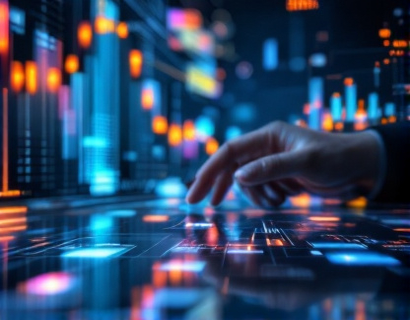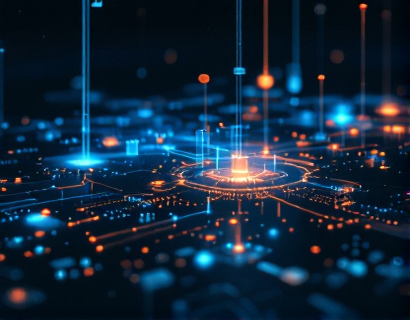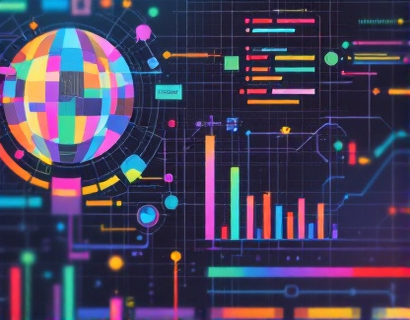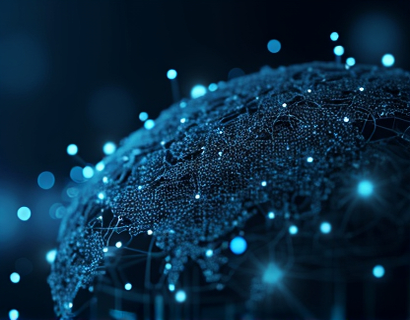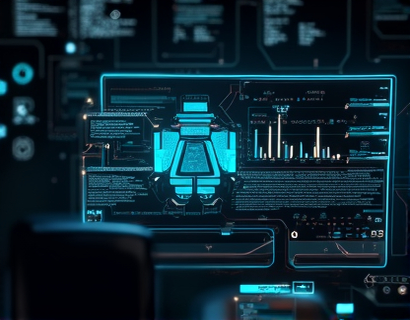Igniting the Future of Digital Productivity: The Synergy of AI and Crypto
The intersection of artificial intelligence and cryptocurrency is igniting a revolution in digital productivity, offering unprecedented opportunities for tech enthusiasts and early adopters. This fusion of technologies is not just a trend but a transformative force that is redefining how we work, interact, and manage our digital lives. As we delve into this topic, it's essential to understand the foundational roles that AI and cryptocurrency play individually, and how their convergence is creating a new paradigm in the digital landscape.
Understanding AI and Its Impact on Productivity
Artificial intelligence, or AI, refers to the simulation of human intelligence processes by machines, particularly computer systems. These processes include learning, reasoning, problem-solving, perception, and language understanding. In the context of digital productivity, AI has become an indispensable tool, automating routine tasks, providing insights through data analysis, and enhancing decision-making capabilities. For instance, AI-powered virtual assistants can manage schedules, prioritize tasks, and even draft emails, significantly reducing the time and effort required for these activities.
The impact of AI on productivity is multifaceted. In business environments, AI-driven tools can analyze vast amounts of data to identify trends, predict market movements, and optimize operations. For individual users, AI can personalize digital experiences, offering tailored recommendations and streamlining workflows. The integration of AI in software applications has led to the development of smart tools that learn from user behavior, adapting to individual needs and preferences over time. This adaptability not only increases efficiency but also enhances user satisfaction and engagement.
Exploring the World of Cryptocurrency
Cryptocurrency, on the other hand, is a digital or virtual currency that uses cryptography for security. It operates on a decentralized network, typically a blockchain, which ensures transparency, security, and immutability. Bitcoin, launched in 2009, was the first and most well-known cryptocurrency, but since then, thousands of alternative coins (altcoins) and tokens have emerged, each with unique features and use cases. Beyond being a medium of exchange, cryptocurrencies are revolutionizing various sectors, including finance, supply chain management, and digital identity verification.
The decentralized nature of cryptocurrencies eliminates the need for intermediaries, reducing transaction costs and increasing speed. This has significant implications for digital productivity, as it enables seamless and secure transactions for a wide range of services and applications. For example, cryptocurrency can be used to pay for cloud storage, software subscriptions, and online courses, providing a more efficient and secure payment method compared to traditional financial systems.
AI and Crypto: A Synergistic Combination
The true power of AI and cryptocurrency is realized when they are combined. This synergy creates a powerful ecosystem that enhances digital productivity in several ways. One of the primary benefits is the improvement of security and trust. Blockchain technology, the backbone of cryptocurrencies, provides a tamper-proof ledger that ensures data integrity. When AI is integrated into blockchain systems, it can detect and prevent fraudulent activities, further enhancing the security of digital transactions and data storage.
Another significant advantage is the optimization of smart contracts. Smart contracts are self-executing contracts with the terms of the agreement directly written into code. AI can analyze and automate the execution of these contracts based on predefined conditions, reducing the need for manual intervention and minimizing the risk of errors. This automation not only speeds up processes but also ensures consistency and reliability.
Enhancing Data Analysis and Insights
The combination of AI and cryptocurrency also revolutionizes data analysis and insights. Blockchain provides a transparent and immutable record of transactions, while AI can process and analyze this data to uncover valuable insights. For instance, in the financial sector, AI can analyze blockchain data to identify patterns, predict market trends, and assess risk more accurately. This enhanced data analysis capability is crucial for making informed decisions and optimizing investment strategies.
In the realm of digital marketing, AI-driven analytics combined with cryptocurrency-based payment systems can provide more precise targeting and better ROI tracking. Advertisers can use AI to analyze blockchain data to understand user behavior and preferences, allowing for more personalized and effective marketing campaigns. Cryptocurrency ensures that transactions are secure and transparent, building trust with consumers and improving brand reputation.
Decentralized Applications and Productivity Tools
Decentralized applications (dApps) are a prime example of how AI and cryptocurrency are transforming digital productivity. dApps are applications that run on a blockchain network, leveraging the decentralized nature of the technology to provide greater control and transparency to users. These applications can be designed to integrate AI functionalities, creating powerful tools that enhance productivity in various ways.
For instance, AI-powered dApps can offer intelligent task management, where the application learns from user habits and suggests optimal task schedules, prioritizes tasks based on urgency and importance, and even automates repetitive tasks. These dApps can also facilitate collaborative work, allowing teams to share data and resources securely and efficiently. The decentralized aspect ensures that no single entity has control over the data, reducing the risk of data breaches and enhancing privacy.
Another area where AI and cryptocurrency are making waves is in the development of decentralized finance (DeFi) platforms. These platforms provide financial services such as lending, borrowing, and trading without traditional financial intermediaries. AI can enhance DeFi by providing sophisticated risk assessment tools, automated trading bots, and personalized financial advice. This not only democratizes access to financial services but also increases the efficiency and accessibility of financial transactions.
Challenges and Considerations
While the fusion of AI and cryptocurrency offers numerous benefits, it also comes with its own set of challenges and considerations. One of the primary concerns is the regulatory landscape. The decentralized and often anonymous nature of cryptocurrencies can pose challenges for regulators aiming to ensure compliance and prevent illegal activities such as money laundering and fraud. As AI becomes more integrated into these systems, the need for clear and adaptive regulations becomes even more critical.
Another challenge is the technical complexity involved in developing and maintaining AI and blockchain-based solutions. Both technologies require specialized knowledge and resources, which can be a barrier for smaller organizations and individual users. However, as the ecosystem matures, we can expect more user-friendly tools and platforms to emerge, making these technologies more accessible.
Future Prospects and Innovations
Looking ahead, the future of AI and cryptocurrency in digital productivity is promising. One area of innovation is the development of AI-driven blockchain analytics platforms that can provide real-time insights into blockchain transactions and smart contract executions. These platforms can help businesses and individuals make data-driven decisions, optimize operations, and identify new opportunities.
Another exciting development is the integration of AI with Web3 technologies, which build on the principles of blockchain to create a more decentralized and user-centric internet. AI can enhance Web3 applications by providing personalized experiences, intelligent recommendations, and seamless interactions. This convergence has the potential to redefine how we access and use online services, making the digital world more intuitive and efficient.
Furthermore, the rise of non-fungible tokens (NFTs) and their integration with AI is opening new avenues for creativity and digital ownership. AI-generated art and content can be tokenized and sold on blockchain platforms, providing artists with new revenue streams and collectors with unique digital assets. This intersection of AI and cryptocurrency is not only transforming the art world but also creating new economic models and opportunities.
Conclusion
The fusion of AI and cryptocurrency is igniting a new era of digital productivity, offering transformative solutions that enhance efficiency, security, and innovation. As these technologies continue to evolve and integrate, we can expect to see even more groundbreaking applications that redefine the way we work and interact in the digital realm. For tech enthusiasts and early adopters, embracing this synergy is not just an option but a necessity to stay ahead in the rapidly changing digital landscape.













